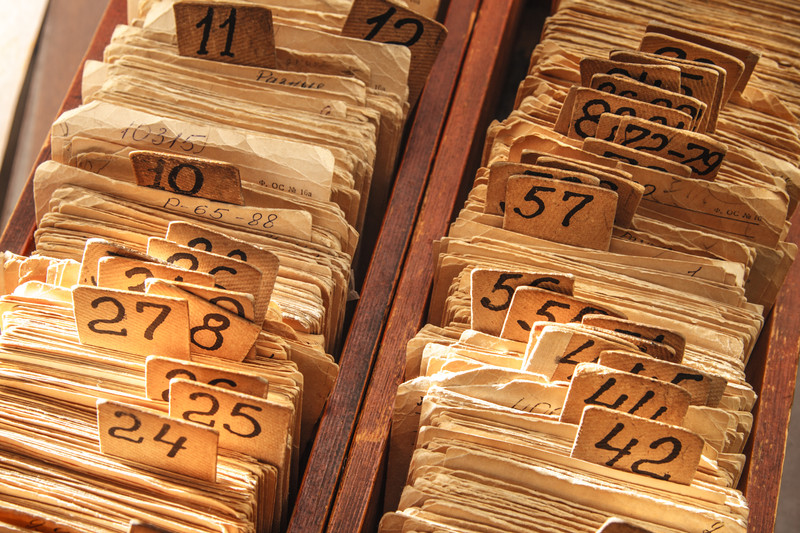By Elizabeth Shown Mills

Oh, yes, we love them—those indexes and finding aids. They shortcut our slogs through endless records. Used wisely, they lead us to more (and more accurate) information. But they can also perplex us and mislead us. Here are a few tips to help us reap their benefits without nicking ourselves with our own scythe.
In the framework of history research, an index is usually a tool, rather than a record. Typically, indexes are used in three ways, each of which involves different considerations for citations and analyses.
Initial Step in the Research Process
When an index points us to a source and we proceed to consult that source, we rarely need to cite the index. An exception would be a case in which an index provides some sort of special insight.
Temporary Step in an Ongoing Research Project
In the course of our research, we may access a microfilmed index or an electronic database for a record set, while the records themselves are not immediately available. In such cases, we take our notes from that index and we cite that index as the source of those notes. As a rule, this is a policy for our working files only. Our pursuit of reliable evidence dictates that we proceed to use the actual records rather than make judgments on the basis of index details that the compiler has presented out of context. Once we examine the actual record set, we report our findings from that search and cite the actual records.
Statistical or Background Perspectives:
On occasion, to add perspective to our conclusions, we may compile statistics from an index or analyze it for patterns. In other cases, clerks who created index entries at the same time they recorded legal and sacramental acts may have amplified the index with details about the parties that do not appear in the main documents. In such cases, the index itself is a source to be cited on its own merits.
We do hear it said, among researchers, that one should never cite an index. That caution is misdirected. We always cite what we use. The critical issue is whether we are using the best source possible for the assertion that this citation will support. If we're citing it as a stop-gap measure, fine. If the index is the best or only surviving source, then it's appropriate—even in our published work—to cite it and thank Clio that at least the index has survived.
(Adapted from EE 2.12)
PHOTO CREDIT: "Old Cards Index Catalog," CanStockPhoto (http://www.canstockphoto.com/images-photos/indexes.html#file_view.php?id=25601959 : accessed 6 May 2015), image csp25601959, uploaded by Garsya 28 February 2015; used under license.
Posted 7 May 2015